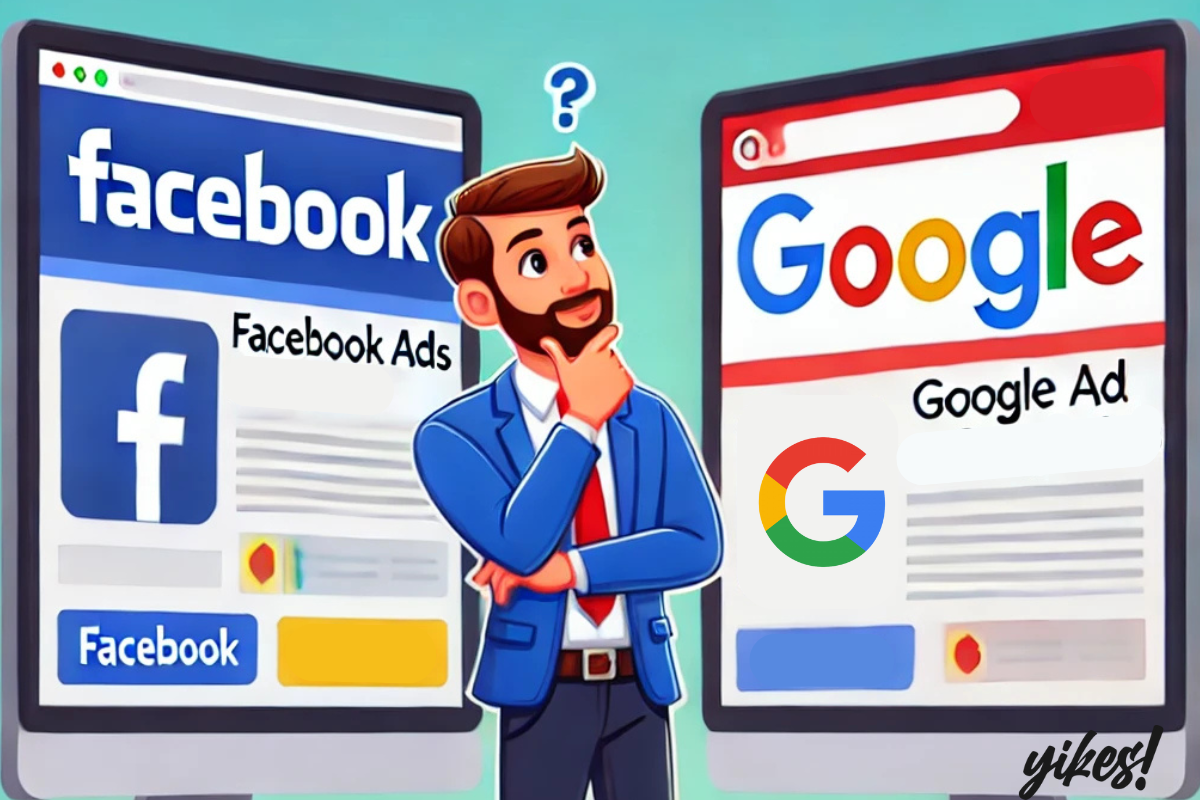Connect
Address
Office 4/184 Pier St,
Perth WA 6000, Australia
Perth WA 6000, Australia
Tossing up on where to spend your ad budget online? Discover if ads on Google or Facebook will be best for your business with our guide.

If you’re a business owner seeking to generate more leads online through paid advertising, you may find yourself wondering which platform is best – Facebook or Google.
While both are dominant and highly effective digital marketing platforms they do serve different purposes and cater to different audiences. As such, knowing which to choose can be crucial to the success of your advertising campaign and its ability to drive traffic to your website.
To help determine which of these is best suited to your website, we’ve prepared the following guide comparing Google Ads and Facebook Ads. Providing an introduction to each, we will also analyse a variety of criteria such as targeting, cost, ad formats and more so you can make the most informed choice for your business.
Google Ads, formerly known as Google AdWords, is a pay-per-click (PPC) advertising platform that displays your ads on Google’s search results pages (SERPS) and its extensive display network. The latter refers to a group of more than 2 million websites, videos and apps where your ads can appear.
Google Ads primarily focuses on intent-based targeting. This means it shows ads to users actively searching for specific products, services or information. In simple terms, when users type in a keyword related to your business, your ad can target them by popping up in their search results.

Facebook Ads, which also includes Instagram Ads as part of Meta, is a social media advertising platform that allows businesses to target users based on demographics, interests and behaviours.
Unlike Google Ads, which targets user intent, Facebook focuses on interest-based targeting, displaying ads to users who match specific criteria. A more suggestive type of marketing, Facebook Ads excel at helping businesses reach users who may not necessarily be searching for a product or service.
Instead, it shows ads that they are likely to be interested in based on their behaviour, likes, or activities on the platform. In short, ‘here’s something you may like because you looked at or engaged with X, Y, Z’.

Google offers several ad types to choose from, these being:
This mixture of available ad formats makes Google Ads a versatile digital marketing solution that allows you to leverage the benefits of different types of customer engagement.
Facebook Ads are all centred on visually-driven formats such as:
The emphasis on visual and interactive content makes Facebook Ads ideal for businesses wanting to engage more meaningfully with users rather than just focusing on direct conversions.
Of course, cost can play a huge role in how and where you decide to advertise as a business.
With both platforms, advertising costs will depend on several factors, such as industry, competition, and targeting options. However, as an indication:
Google Ads tends to have a higher cost-per-click, especially for high-intent keywords. Despite this, the return on investment (ROI) is often well worth the cost, especially if you are targeting users with strong purchase intent.
Facebook Ads will often have a lower cost-per-click than Google, which can be appealing upfront or when advertising budgets are tight. Yet, while it’s cheaper, conversions can be slower since users are not actively searching for products meaning your ROI may be compromised.
Ultimately, the answer to this question depends largely on your business goals.
If your goal is immediate conversions or capturing users with strong purchase intent, Google Ads is likely the best platform for you. Conversely, if your goal is to build brand awareness, engage with potential customers, or market visually appealing products, Facebook Ads may be a better fit.
It’s worth noting too, that there’s no rule saying you have to choose one over the other and many websites find that a combination of both platforms yields the best results. This allows them to leverage the strengths of each and give their business the best chance of success.
